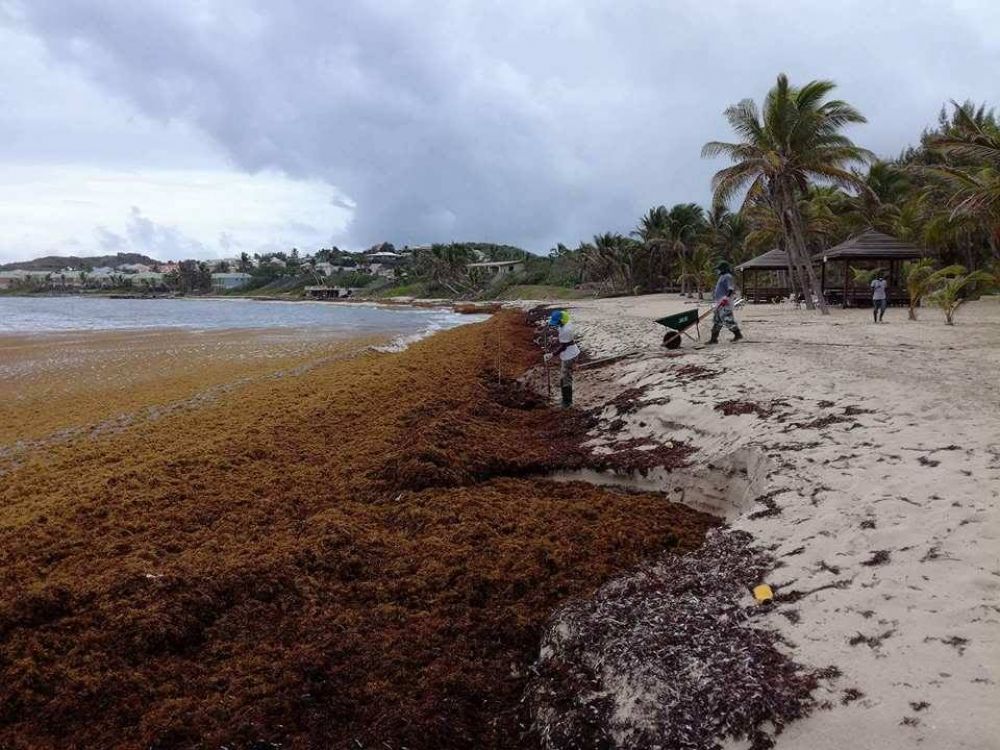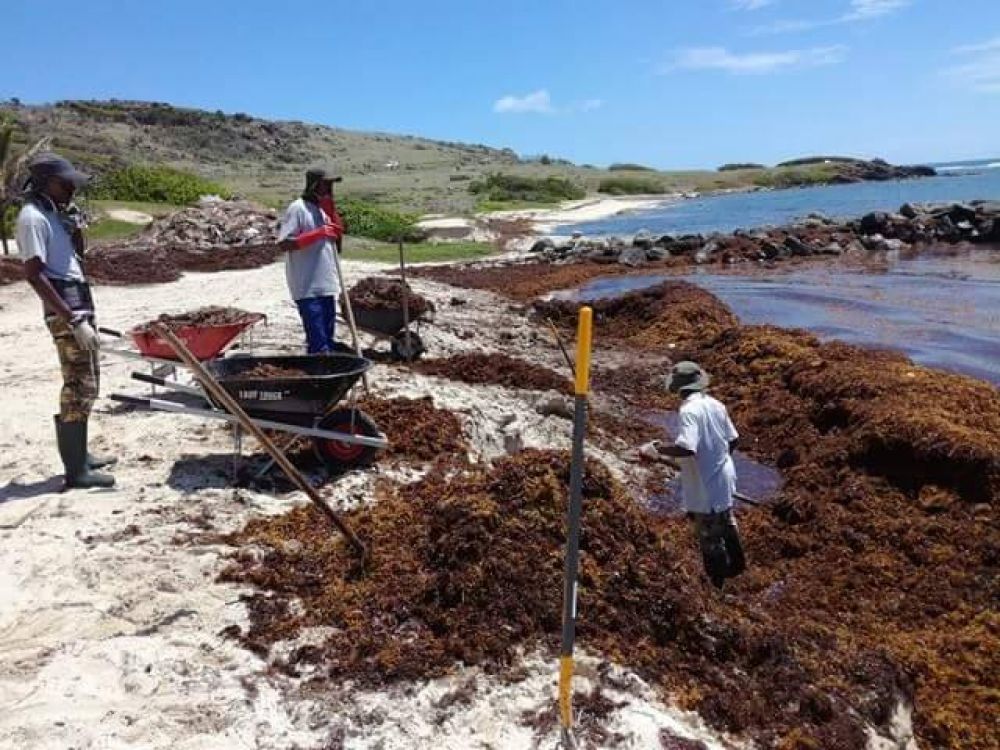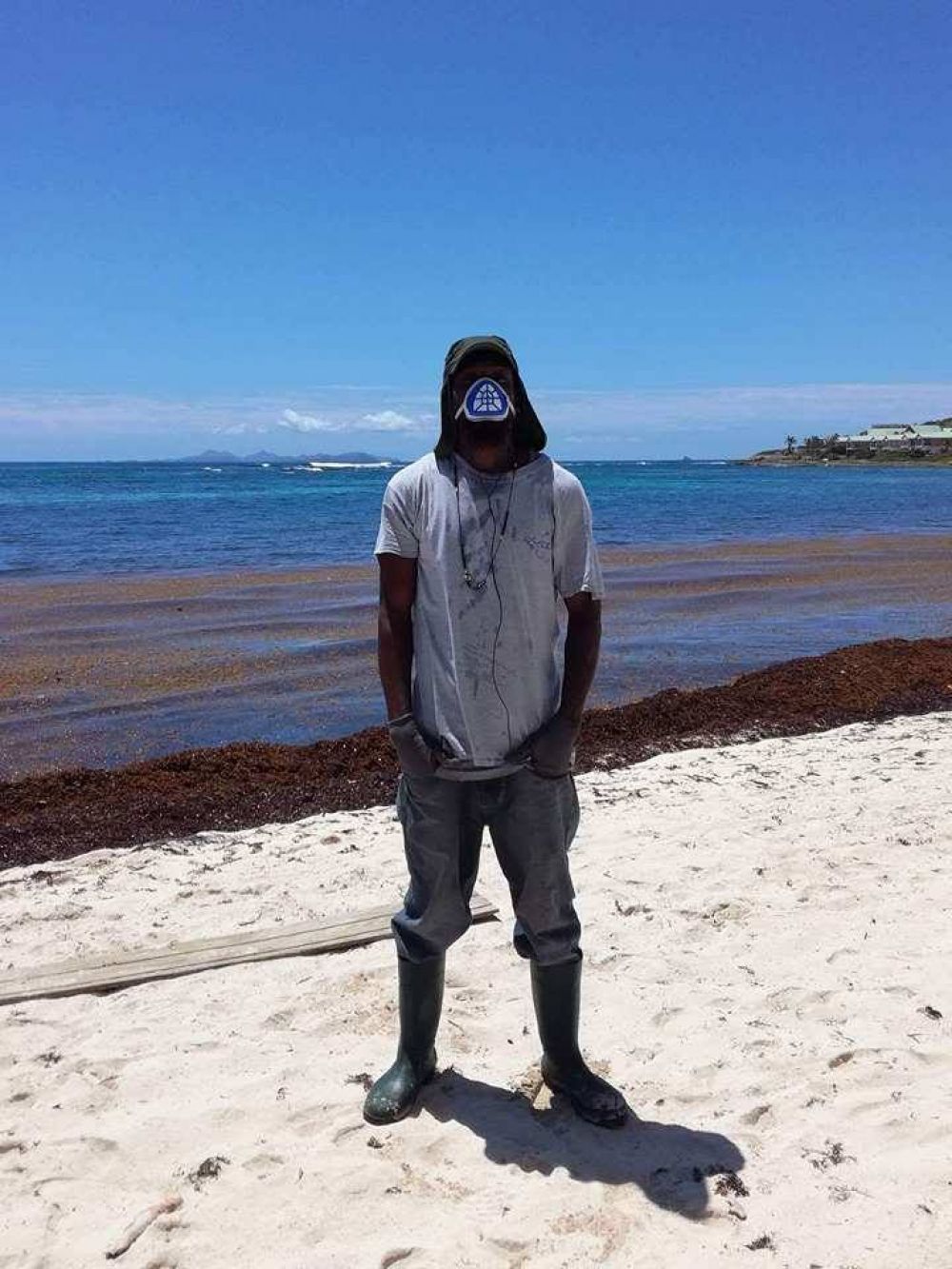Seaweeds are back
For a couple of weeks, seaweeds (Sargasso) have been inundating the beaches of Saint-Martin. "The season starts again, there are seaweeds all along the beach with one meter in height" reports brigadier Ismaël from Coralita beach. In Martinique and Guadeloupe, they have been found there for more than a month. Brown algae periodically invade the coasts of the Lesser Antilles. Appeared in 2011, this phenomenon whose origin remains scientifically unexplained, has turned into a genuine scourge between April 2014 and October 2015. Massive, almost continuous beachings have caused not only health issues, but also economic and environmental problems. By the end of 2014, the State had implemented support measures in favor of the Collectivités, as well as an emergency plan at the local, then national level in summer 2015. If it is a scourge with disastrous consequences especially on tourism and fishing, "this remains a natural phenomenon" says Julien Chalifour, responsible of the scientific pole of the nature Reserve. He warns against the mismanagement that has sometimes been made. The use of backhoes and other heavy machinery to collect them indeed causes considerable damage on the beaches, especially when Sargasso season matches that the nesting of sea turtles. "Nuisance due to gaseous emissions can be avoided if the collection includes an interflow of Sargasso then their transport to processing sites, is actually carried out within a period of three days for Sargasso and one week stranded ashore for the Sargasso floating by the shore. It is, indeed, beyond these time frames that layers of Sargasso give off gas by fermentation, especially the hydrogen sulfide (H2S), which, at low doses, spreads a particularly nauseating smell and, at higher doses, can become toxic" as quoted in a report jointly commissioned by the French departments of agriculture, environment and overseas, published in July 2016.
Pick them up by hand is the most environmentally friendly solution but also depends on the accessibility of the beaches, it sometimes even the only solution. Since January 2016, the Green brigade - consisting of twenty members, employed by the Centre Symphorien d’Insertion, travels every day the beaches of Cul de Sac, Coralita and Galion. Using pitchforks, gloves, boots and wheelbarrows, they pick up the Sargasso stranded on the coast. The Collectivité then carries these piles to the dump. They continue to dry in the sun before being added to the other green waste and then being transformed into compost which is then sold all over the island. Jean-Pierre Tey, the Director of Verde SXM, manager of the waste disposal site, says they deal with 4000 tons of green waste per year, of which 150 are Sargasso: "Once dried, there is not much, the Sargasso being composed of 95% of sea water" he explains. The agricultural use of these brown algae remains the most effective way to use them for the moment.
Photo credits: CSI









